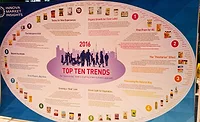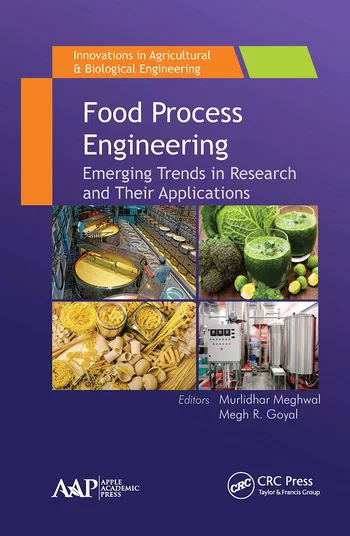Food and beverage mergers and acquisitions trends
M&A activity sheds light on consolidations in the dairy industry, growth in the alcohol space and expansions into cannabis-related packaged food and beverages.

Mergermarket, an Acuris company, has released its Global M&A roundup report for the consumer sector for the year of 2017. A few key findings of the report include:
- The consumer sector M&A remained strong last year, accounting for a 12.1 percent share in overall global M&A by value. The sector’s total deal value rose 68.4 percent to US$ 381.1 billion globally over 2,093 transactions from 2016, marking the third-highest total on Mergermarket record since 2001.
- The figures show an ongoing increase in deal sizes worldwide, with the consumer sector recording six megadeals in 2017. These transactions alone were worth a combined US$ 149.8 billion and comprised 39.3 percent of the consumer sector’s global market share by value.
- For another year, the US leads global consumer activity by capturing 44 percent of the market share by value with 507 deals worth US$ 167.8 billion as well as recording three out of the top five transactions for the period globally.
To get more details on food and beverage M&A activity, Food Engineering talked to Elizabeth Lim, senior research analyst for Mergermarket.
For more on mergers and acquisitions in the food & beverage industry, click here!
FE: What were the biggest food and beverage M&As for 2017? What does this say about what kinds of food and beverage companies are being bought and sold?
Lim: The consumer food and beverage industry’s top transactions in 2017 were primarily cross-border, with the top deal both globally and in the US being UK-based Reckitt Benckiser Group's US$ 17.8bn acquisition of US-based Mead Johnson & Company, the baby formula company. The deal was also the only mega-deal in the space (>US$ 10bn).
One reason for this was Reckitt Benckiser’s desire to enter the infant formula market, as well as to seek high-value assets in the US as Brexit continues to loom over the UK, the exact details of which are still fairly uncertain. As a general rule, dealmakers don’t really like uncertainty. The deal contributed to the UK becoming the top geography of firms looking to acquire US companies in 2017 in the first full year after the Brexit referendum. In fact, in 2017, British firms bought 160 American companies for a record total of US$ 108.8bn. In 2018, it’s likely that UK companies will continue to hunt for more US assets to add to their portfolios.
The Reckitt Benckiser/Mead Johnson deal also sheds light to some degree on an emerging trend within the food and beverage space – consolidations in the dairy industry. Some notable deals in 2017 include (all of which were above US$ 1bn): China Mengniu Dairy Company’s US$ 1.8bn acquisition of a 67% stake in China Modern Dairy Holdings, Mexico-based Grupo Lala’s US$ 1.6bn acquisition of Brazil-based Vigor Alimentos, and Canada-based Saputo’s US$ 1bn acquisition of Australia-based Murray Goulburn Co-operative. Another deal worth noting was France’s Groupe Lactalis buying US-based Stonyfield Farm for US$ 875m from Danone.
Another trend we’ve been noticing is growing M&A in the alcohol space – particularly in the beer industry. The largest transaction globally in 2017 was Vietnam Beverage Company’s US$ 4.7bn acquisition of a 53.6% stake in Vietnam-based Sabeco, followed by the Netherlands’ Heineken acquiring the Brazilian operations of Japan’s Kirin Holdings for US$ 1.1bn and Brazil-based Ambev’s US$ 927m acquisition of a 30% stake in Dominican Republic-based Tenedora CND. Also noteworthy is China-based, Hong Kong-listed Fosun International’s US$ 846m purchase of an 18% stake in China’s Tsingtao Brewery.
Relatedly, the bottling business has also started to pick up. In 2017, we saw Mexico’s Arca Continental and Coca-Cola’s Southwestern Beverages division enter into a joint venture called AC Bebidas, worth US$ 2.7bn, covering among others bottling services. We also saw along the same lines the Netherlands-based Refresco Gerber buy US-based Cott Corporation’s bottling activities division for US$ 1.3bn.
One potential explanation for the emerging popularity of craft beer and decreased demand for larger, more mainstream brands such as Coors Light and Budweiser has been changing consumer tastes. Especially popular among millennials, craft beer and other local, DIY-type products – with more attention paid to fuller flavors, better quality, and more local ingredients – is in part driven by this generation’s willingness to focus on “experiences” instead of just strict consumption for consumption’s sake.
FE: Can you explain further about the cannabis-related packaged food and beverage market?
Lim: As far as the cannabis market goes, however, having only recently been legalized and now facing challenges from the US Department of Justice, it’s still very much in the nascent stages with most reported deals stemming from the production and services space, with little activity announced with regard to cannabis-related packaged food and beverages as of yet. That said, one notable deal in this area, and also the largest, was US-based Constellation Brands’ US$ 191m acquisition of a 9.9% stake in Canada-based Canopy Growth Corporation. Constellation is a publicly-listed beer and wine company, and from this purchase it looks like they are looking to expand into cannabis-related packaged food and beverages. However, it remains to be seen how far this could go now, given the DoJ’s recent announcement.
FE: How does the rate of M&As in food and beverage happening in the US compare with the global activity? Any particular reasons for the differences?
Lim: US food and beverage M&A saw a five-year deal count high of 195 transactions worth a total of US$ 50.8bn in 2017, while global food and beverage M&A saw 856 transactions worth a total of US$ 142.4bn, also a five-year deal count high as well as second-highest deal value over the same period. By deal count, the US accounted for 22.8% of global deals, its highest share in the last five years, though by deal value market share reached only 35.6%, its second-lowest over the same period. What this tells us is that there more deals taking place in the middle market and lower-middle market spaces, while valuations have dampened somewhat. When you consider the aforementioned examples, a lot of the deals we saw in 2017 were cross-border, spurred on by the need to consolidate and find high-value assets abroad if they couldn’t be found at home. However, at the same time, a good deal of geopolitical uncertainty throughout the year also led dealmakers to be a bit more cautious, engaging in fewer mega-deals.
Another factor at play has been rising interest rates, which have gradually started increasing since December 2015 after being near-zero for seven years. With an increase in rates comes an increase in the cost of borrowing, so now it becomes more expensive to finance a deal, bringing values down somewhat.
FE: What other trends do you think will affect M&As this year? (For instance, more investment in foods that are organics, plant-based, cannabis or others?)
Lim: There does appear to be a shift toward more organic and healthy foods taking place in the food and beverage industry. We’ve seen a couple of large deals such as Groupe Lactalis/Stonyfield, as well as US-based The Simply Good Foods Company buying US-based Atkins Nutritionals for US$ 730m last spring. Campbell’s Soup also purchased Pacific Foods of Oregon last summer for US$ 700m in an effort to move into more organic food offerings. Similarly, Kellogg bought Chicago Bar Company for US$ 600m, moving into the fruit and nut energy bars market. Further, these are all foods that appeal to millennials, who have shown that they are more willing to prioritize health and well-being over the sometimes quick and cheap and perhaps less healthy options, and it’s they who have been driving some of these shifts in the food and beverage industry.
Some other things to consider with regard to M&A overall this year are interest rates – how much will they continue to go up and when, how will that affect deal values, and how tax reform plays out? With the latter, companies will be saving a good deal of money and have a strong incentive to repatriate some cash from abroad, which leads us to think that we may see an uptick in M&A deals this year.
To see the report, please visit: http://www.mergermarket.com/pdf/MergermarketQ42017ConsumerTrendReport.pdf
Looking for a reprint of this article?
From high-res PDFs to custom plaques, order your copy today!







